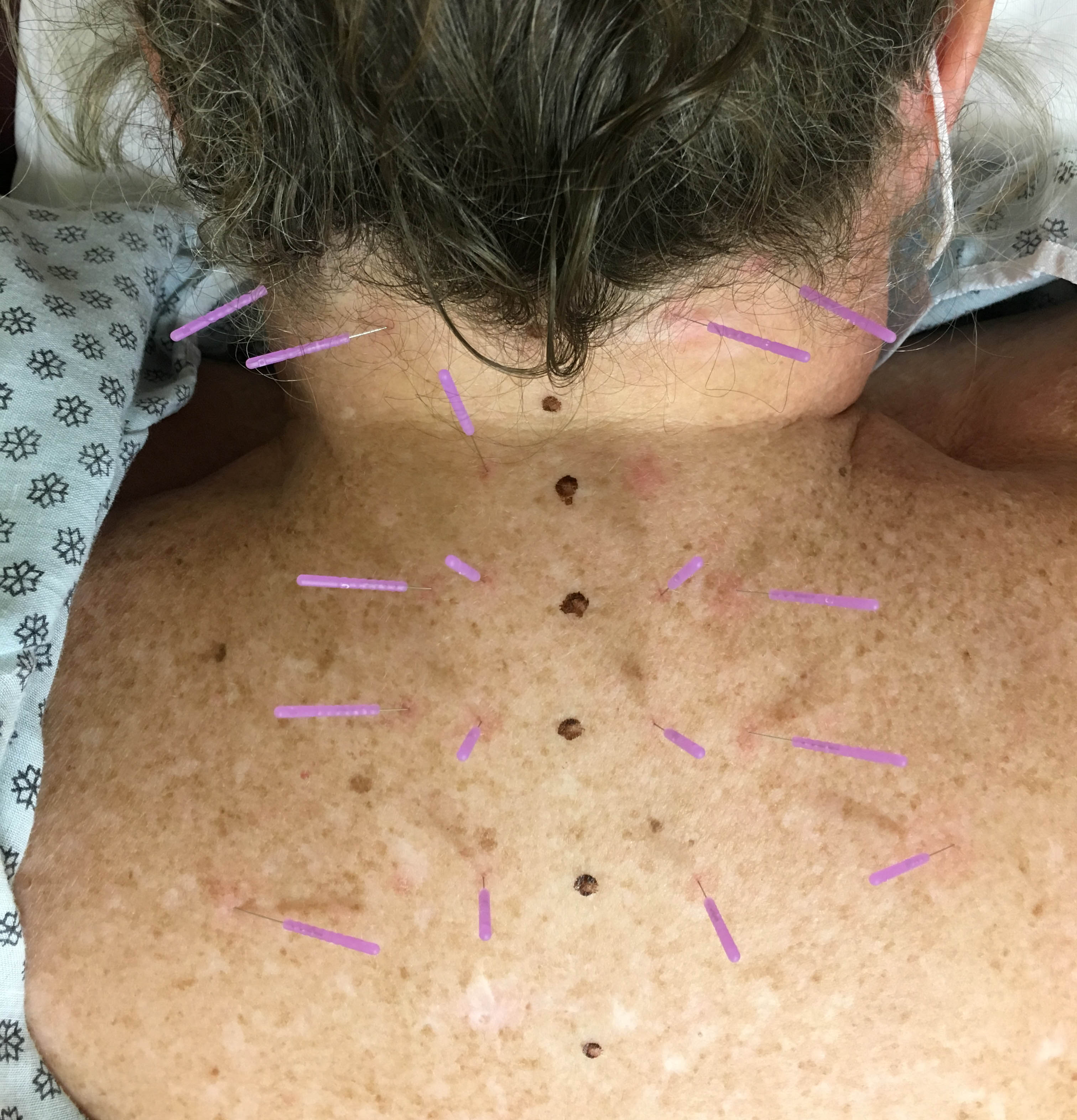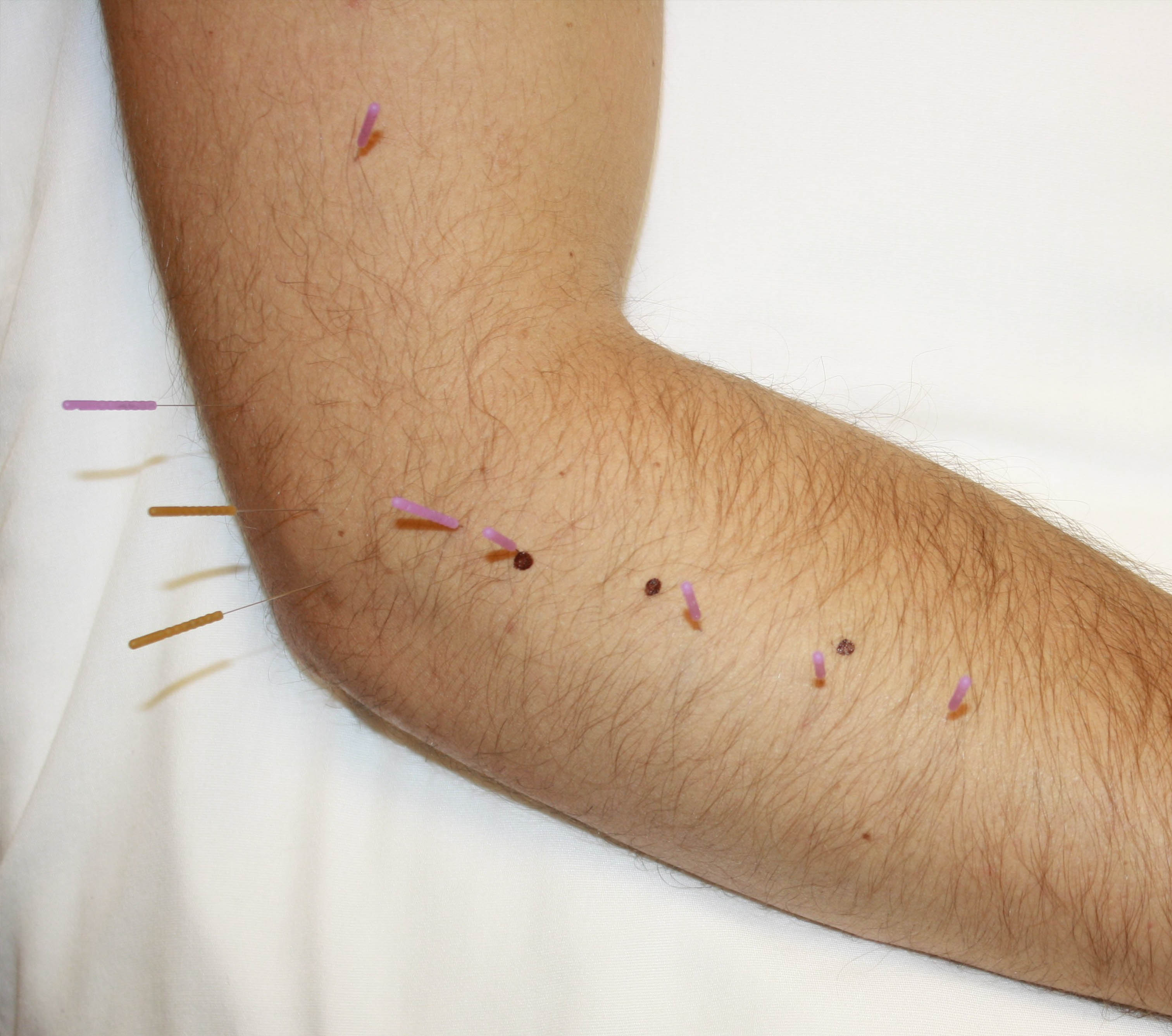Comprehensive Physical Therapy Treatments
There are several services and treatments provided by Southern Rehab Physical Therapy. Our therapists will perform a one-on-one evaluation and discuss your therapy goals then select the best treatment options for you.
|
|
|
Dry Needling
Our certified therapist, Rachel Carter, PT, DPT, OCS, performs dry needling to treat new and chronic musculoskeletal conditions. Dry needling is a form of physical therapy. A thin, solid needle is inserted into painful knots in muscles (also known as trigger points). Solid needles are different from hollow needles (also known as hypodermic needles), which are used to draw blood or inject steroids or other medications. Solid needles are known as monofilament needles. They are not hollow and are smaller and less painful than a hypodermic needle. Nothing is injected into the body, other than the needle itself.
Dry needling can also be used in muscles, tendons, ligaments, or close to the nerves to stimulate a healing response in acute and chronic musculoskeletal conditions. Dry needling is not acupuncture or Eastern Medicine; that is, it does not have the purpose of changing energy along traditional Chinese Meridians to treat diseases. Dry needling is a modern, medical, and evidence-based treatment for pain and problems in musculoskeletal conditions such as:
- Shoulder Impingement
- Tennis Elbow
- Knee Pain
- Carpal Tunnel
- Neck Pain
|
- Headaches/Migraines
- Plantar Fasciitis
- Low Back Pain
- Knee Pain
- Shin Splints
|
|


|
|
|
|
IASTM (Instrument Assisted Soft Tissue Massage)
Instrument Assisted Soft Tissue Massage (IASTM) is a form of manual therapy that uses a special handheld tool to mobilize soft tissue structures. IASTM helps to break down scar tissue, improve muscle extensibility, and facilitate healing.
- Plantar Fasciitis
- Hip Bursitis
- Tendinitis
|
- Muscle Strains
- Lateral Epicondylitis or Tennis Elbow
|
Post-Surgical Rehab
At SRPT, we provide physical therapy treatment for those following various surgical procedures. We use specific protocols based on physician orders and healing time frames to ensure you, as a patient, progress and meet your rehab goals. Examples of surgical procedures that we provide post-operative therapy for include:
- Rotator Cuff Repair
- Total or Partial Knee Replacement
- Hip Replacement
- Shoulder Replacement
- Spinal Fusion
|
- Achilles Rupture Repair
- ACL Reconstruction
- Hip Arthroscopic Surgery
- Labral Repair
- And many more!
|
Therapeutic Exercise and Activities
Therapeutic exercises and activities are different from your typical gym exercises. Our physical therapists select specific exercises and activities to address a particular problem or deficit. Therapeutic exercises are planned physical movements intended to:
- Rehab or Prevent Musculoskeletal Impairments
- Improve Ability to Perform Activities
- Return to Sport or Activity Participation
- Reduce Risk of Injury
|
|
|
|
|
Balance Training & Falls Risk Assessments
One in four Americans over the age of 65 falls each year. However, falling is not a normal part of aging and can be prevented. Our therapists will assess your risk for falls and design a specific program to improve your balance and safety. We use evidence-based fall risk assessments, including the timed up-and-go (or TUG), Berg Balance Test, Tinetti Balance Assessment, and five-time sit-to-stand to determine your risk for falls and create your treatment program.
**NEW BALANCE PROGRAM FEATURING BIODEX MACHINE**
- We are now offerring a new Balance Program specifically designed to reduce falls risk in older adults!
- This program features the Biodex Balance Machine which provides data about your balance abilities
- One of our physicial therapists will use this data to create your personalized balance treatment plan
- Together, you and your physical therapist will determine important exercises and activities to help you with your daily activities and reduce risk for falling.
Vestibular Therapy
Our skilled physical therapists perform vestibular therapy used to treat patients with different types of inner ear dysfunction. Symptoms may include dizziness or feeling of room spinning, visual impairments, as well as balance-related deficits. Your therapist will evaluate your symptoms and use vestibular therapy techniques to resolve these symptoms through positional maneuvers, eye coordination, or specific exercises.
LSVT BIG for Parkinson's Disease
We offer LSVT BIG treatment for those with Parkinson's disease. Our LSVT certified therapist, Kacie Hayes, PT, DPT, provides this research-based treatment in our clinic. LSVT BIG is an exercise protocol for individuals diagnosed with Parkinson's disease or other neurological conditions. These individuals may have difficulty with daily activities and walking due to decreased balance and reduced movements' amplitude. LSVT BIG techniques train individuals to use bigger movements anytime, anywhere in everyday life. Benefits of LSVT BIG include improved balance and faster walking with longer steps.
Cardiac & Pulmonary Rehab Phase II
Our clinic provides Phase II Cardiac and Pulmonary rehab. We can perform intermittent monitoring of heart rate, blood pressure, and oxygen to safely meet your cardiac and pulmonary rehab goals. Talk to your physician or cardiologist about starting cardiac or pulmonary rehab.
|
|
|
Manual Therapy
|
Manual therapy includes skilled hands-on techniques and passive movements of joints and soft tissue. It's designed to:
- Improve Tissue Extensibility
- Increase Range of Motion
- Induce Muscle Relaxation
- Mobilize or Manipulate Soft Tissue & Joints
- Modulate Pain
- Reduce Soft Tissue Swelling, Inflammation, or Restriction
|
Examples of techniques we use include:
|
Work Conditioning
Work conditioning is a physical therapy treatment focused on restoring functional requirements for a specific job or employment setting. It incorporates strength training, endurance, flexibility, and coordination exercises. Your therapist will design a treatment program specific for your job duties for you to return to work pain-free.
Telehealth
Telehealth is the use of audio and video technology to provide care to a patient from a distance. Our office uses video calls to treat patients in their homes. This service is available to new and established patients. We use the Doxy.me system, which is HIPAA compliant. All you need is a device with a camera and microphone, such as a mobile phone, tablet, or computer. Ask our office about scheduling a telehealth video visit with one of our skilled physical therapists today!
Telehealth Update
Blue Cross Blue Shield makes telehealth permanent for physical therapy treatments! Those with this insurance can continue to receive telehealth physical therapy services without restriction. If you have questions about your specific insurance coverage, please contact our office.
Modalities (Therapeutic Ultrasound, Electrical Stimulation, Iontophoresis)
At SRPT, we choose to use modalities to complement our other treatments rather than as a primary intervention. We use these modalities for pain relief, muscle relaxation, inflammation, and muscle re-education. We offer:
- Therapeutic Ultrasound & Phonophoresis
- Iontophoresis
|
- Electrical Stimulation - This therapy includes interferential current, NMES, TENS, and more.
|
Mechanical Traction (Cervical and Lumbar)
Mechanical Traction uses distraction forces to separate joint spaces and stretch soft tissue by using a special machine and treatment table. Mechanical traction can perform a sustained or intermittent pull to take the pressure off bulging discs, improve spinal mobility, or relieve muscle spasms. Traction may benefit those with:
- Chronic Neck or Low Back Pain
- Radiculopathy (radiating pain, numbness, or tingling into arms or legs)
|
- Headaches or Migraines
- Neck or Back Muscle Spasms
|
LYMPHEDEMA THERAPY
Lymphedema is an abnormal collection of fluid just below the skin. It most often occurs in the arm or leg, but can occur in other parts of the body as well.
Lymphedema Therapy combines:
- Manual lymphatic drainage massage: a specialized manual technique designed to stimulate the uptake of lymph and move the fluid out of the body
- Medical compression bandaging: this can include, but is not limited to, the use of low stretch bandaging systems to prevent refill of treated areas and continual stimulation of lymphatic structures
- An exercise program to utilize muscle pumping action to help move fluid along lymphatic pathways.
This specialized form of physical therapy can help reduce limb size, increase function, and improve quality of life.
|
|
|
|